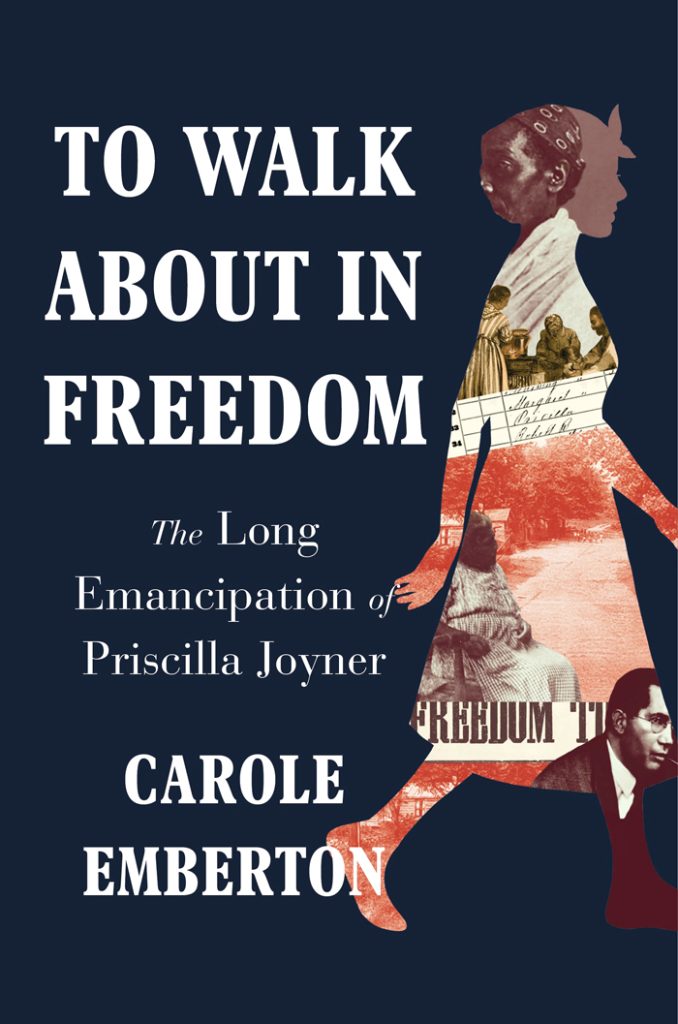c.2022, W.W. Norton
$28.95
242 pages
By Terri Schlichenmeyer
The Truth Contributor
You are not confined to your chair.
If you want to get up and move around, in fact, you can. Stand up, stretch, wiggle your toes, shake out the knots. Step out and drop in on the space next door or down the street and it’s okay. You’re not stuck in your chair or this room or even this building, and in To Walk About in Freedom by Carole Emberton, you’ll get a new appreciation for that ability.
In 1935, at the end of the Depression, the Federal Writers’ Project (FWP) was created to put unemployed teachers, writers, and editors to work, in part by gathering oral histories, with the goal to establish a uniquely American story. Over an eight-year period, FWP workers collected 10,000 interviews, including stories from the Emancipation.
Priscilla Joyner’s was one of them.
She was 80 years old when two FWP workers, both of them Black, came to interview her about her life. Eager to see them, she was waiting for them on the porch of the home she’d lived in for decades. She was ready to talk…
Joyner was born in January of 1858, the child of a white mother and a Black father – or so she was told. She never knew for sure; the white man who gave her his name did so reluctantly. Her Black birth father’s identity was something her mother took to her grave but Emberton says there were other possibilities to explain how Joyner was different from her white siblings and why they were allowed to torment her.
Though she was not a slave in the strictest sense, Joyner lived as one: she was taught domestic tasks but not how to read or write until she was 12 and her mother sent her to live with a Black family, who sent Joyner to school. The move was “upsetting,” and she didn’t understand it but it turned out to be what Joyner needed.
She learned to love her new home. There, she met her husband and found community…
There’s no other way to say this: To Walk About in Freedom is an exceptional book.
On every page, in every single story, author Carole Emberton leads readers to learn something they didn’t know or to meet someone new, and it’s done between the facts of history and social mores, presented concurrently with Priscilla Joyner’s story.
But Joyner’s life isn’t the only one shared here; other FWP interviewees and former slaves’ words are added to the overall, which lends further richness to what you’ll read. Emberton then explains how some FWP interviews were nearly ruined by over-editing and “Uncle Remus” additions made by white writers and editors who insisted on it, and how Joyner’s full story was almost lost.
This is one of those books that’ll make you lose track of time and your surroundings. lt’ll answer questions, raise your pride, and it’ll make your head spin for days after you’re done reading it. To Walk About in Freedom is the book you need to keep you in your chair.

